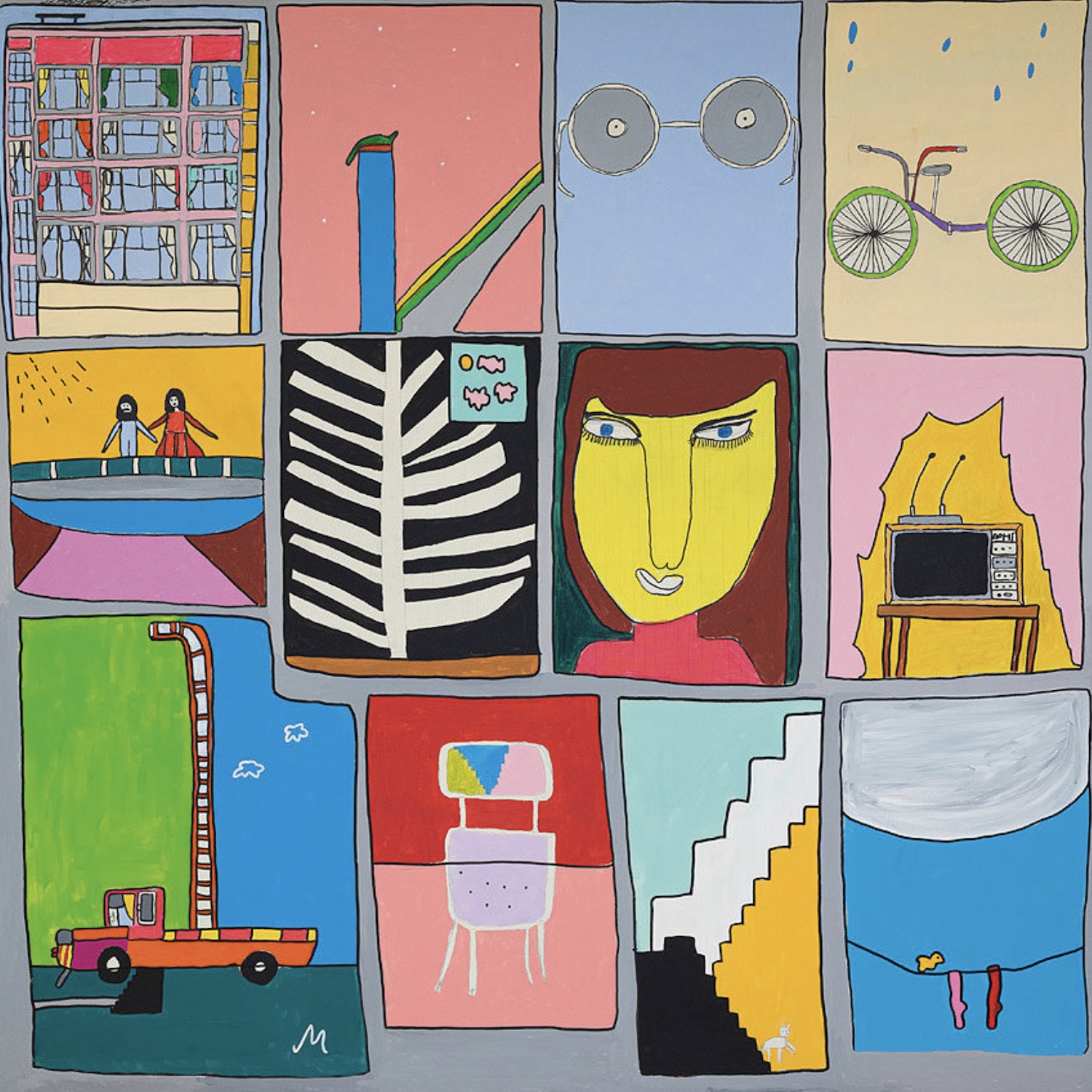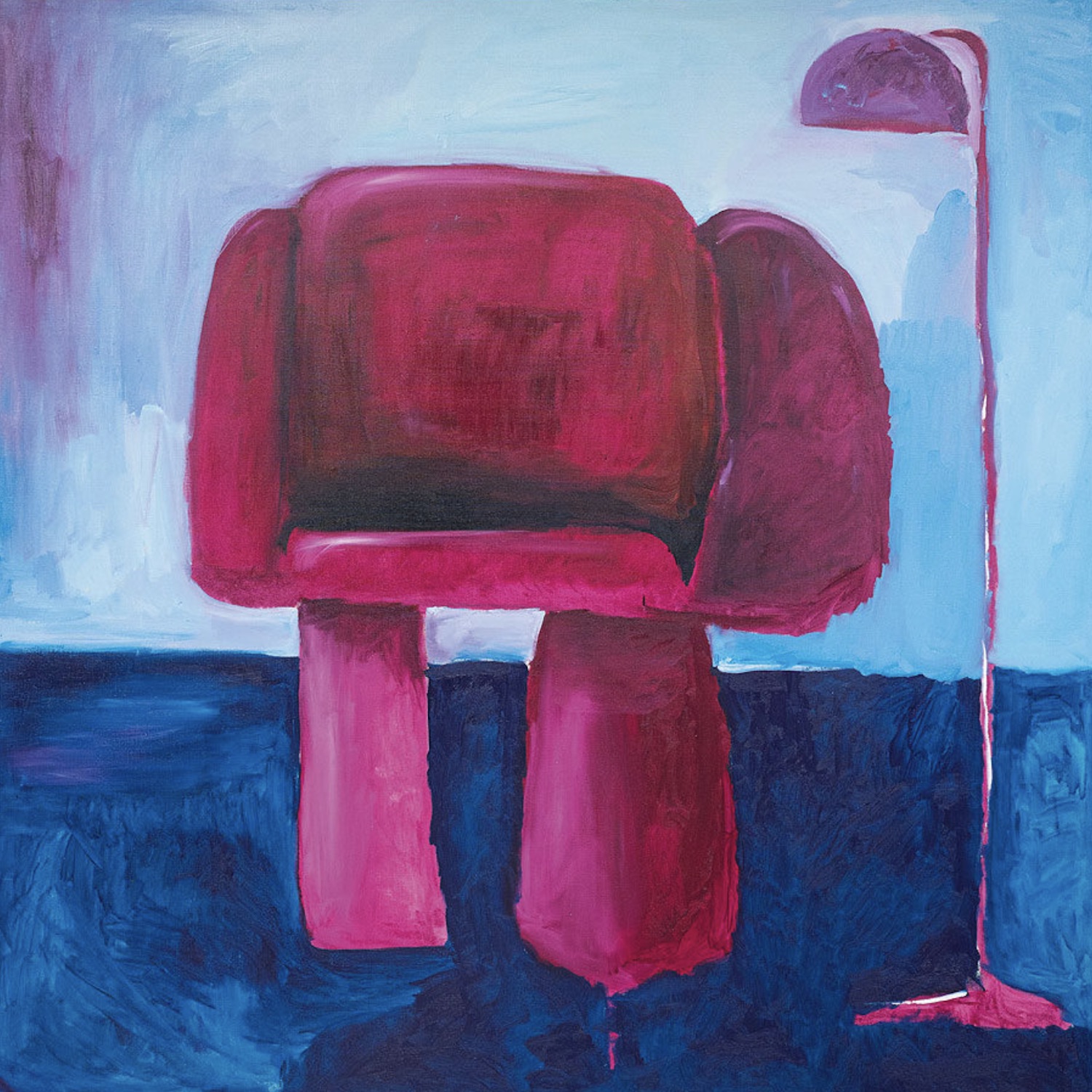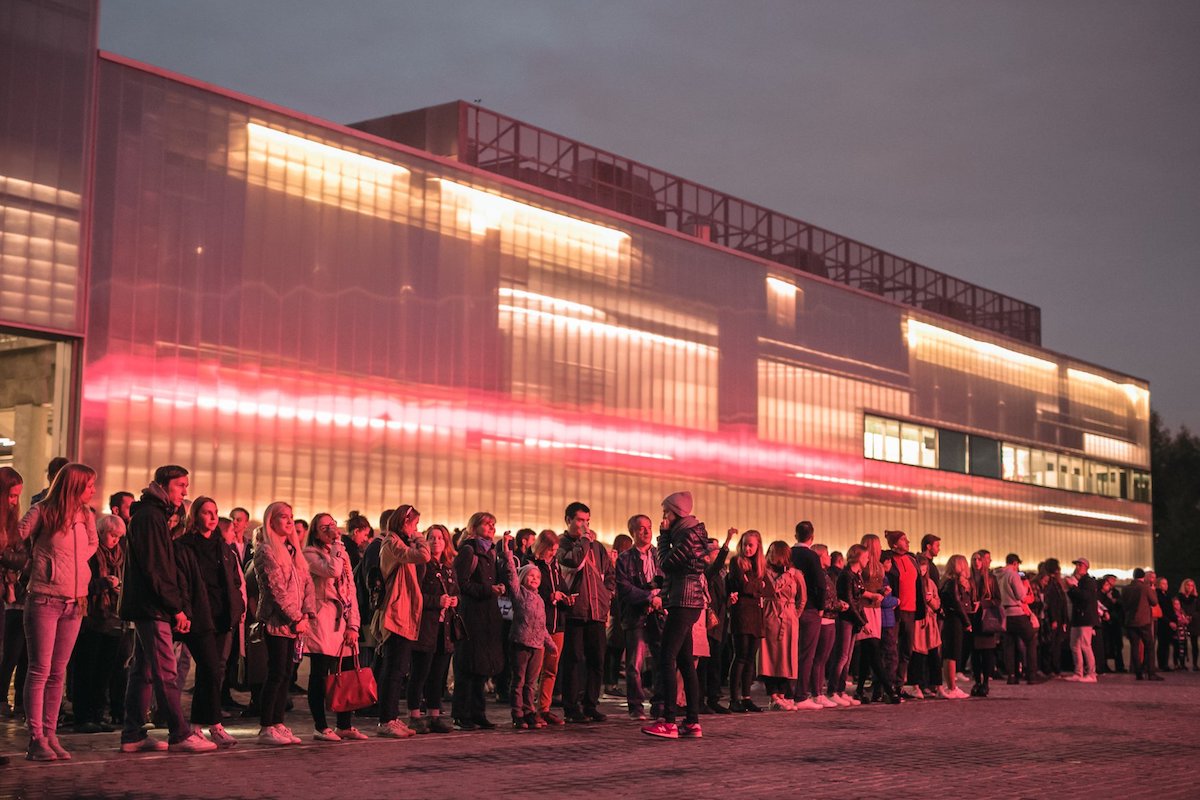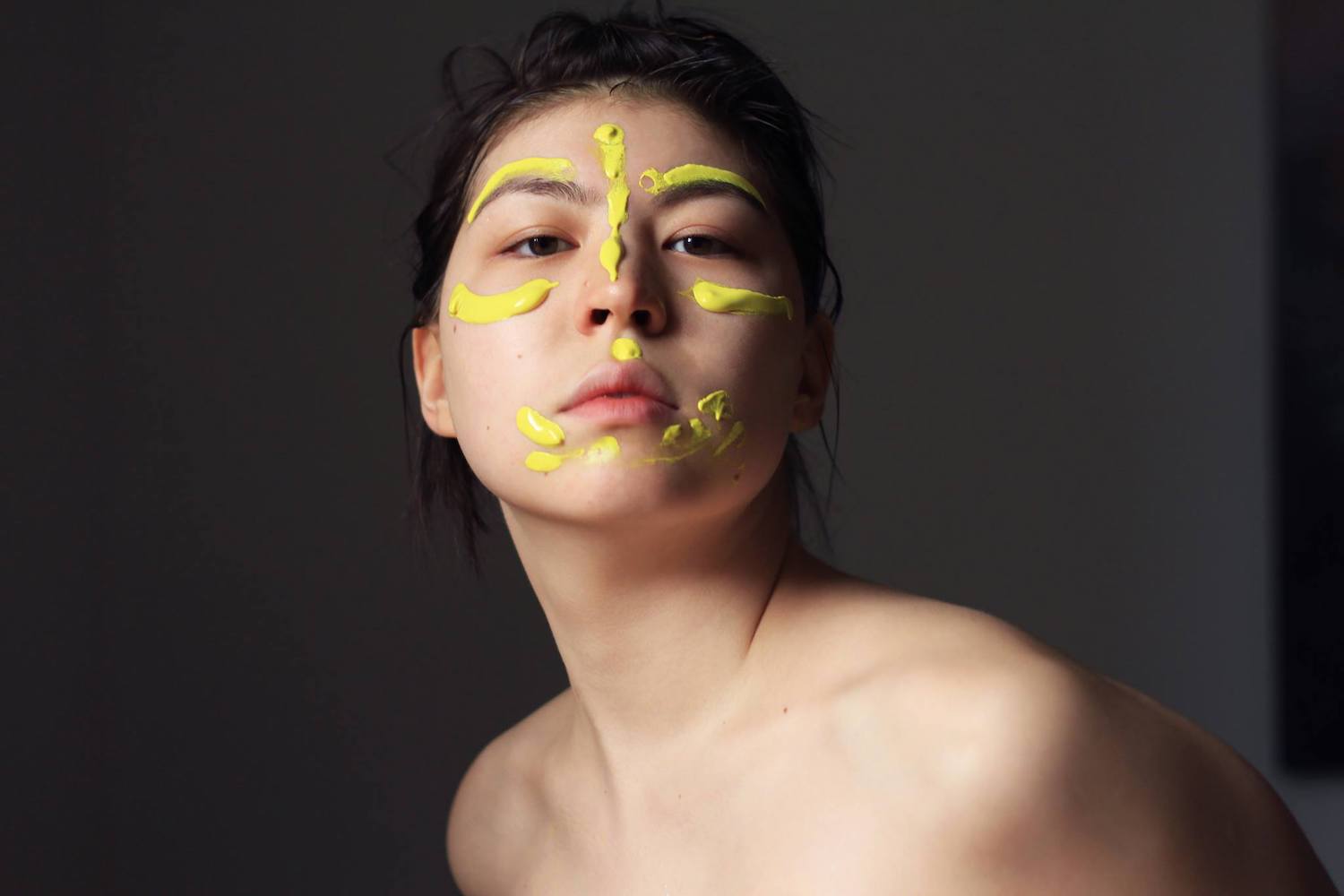Beyond the periphery: the neurodivergent outsider artists challenging Russia’s creative mainstream
Fresh from their long-expected show in Moscow, a new group of neurodiverse artists in St Petersburg is raising difficult questions of creativity, inclusiveness, and artistic responsibility in the Russian art scene.
A distended Spiderman stares down at audiences at Moscow’s ROSIZO exhibition centre, his limbs extended fitfully in his web-slinging attempts. On the next painting, a warped opera house resembles a cathedral interior, as seen through a jello lens. On another, numbers, possibly calendar years, sprawl in grey-blue hues across a 1.5 x 1.5 metre canvas.
It is the opening night for New City Artists, an exhibition that was one of the centre’s last events before the capital goes into coronavirus-related lockdown. But anyone asking to meet the artists themselves are instead directed to project curator Evgeniya Shtil. Come back tomorrow, she says, and prepare to be closely supervised.
Many families keep their neurodiverse relatives at home or confined to care homes, where contact with the rest of the city is strictly regulated.
The request is not a joke. Nor is this some kind of performance art. The group behind the show comprises neurodiverse artists — a term which often refers to people with autism, but can also include those with learning difficulties, conditions such as ADHD, developmental speech disorders, and mental health conditions like bipolar disorder or schizophrenia. All of the artists are currently resident or receiving treatment at state institutions, from whom they need permission to make contact with the outside world.
Such conditions, along with the people who live with them, remain taboo in certain parts of Russian society. Many families keep their neurodiverse relatives at home or confined to care homes where contact with the rest of the city is strictly regulated. For the nine artists featured in the Moscow show, being at the centre of this kind of attention is a sharp contrast to lives lived, more often than not, on the periphery.
The plight of neurodiverse Russians reached international audiences when the documentary Anton’s Right Here was screened at the 2012 Venice Film Festival. Directed by Lyubov Arkus, the film follows a young man named Anton who navigates the reality of living with autism in contemporary Russia: being shuttled between care homes, social institutions, and his divorced parents. The film struck a nerve, winning local prizes and inspiring the creation of the “Anton’s Right Here” organisation in St Petersburg, where volunteers provide assistance to people with autism. But even after the film’s success, the lives of those too often hidden away in social institutions and care homes still remain unknown to many.
Kirill Maidanyuk, Theatre
Before entering the art world, curator Evgeniya Shtil was a social worker — unlike most Russians, she was intimately familiar with the world explored in Anton’s Right Here. One of the things that struck her through her career was the amount of raw creativity among the residents. “The patients who live [in residential units] have little outlets for self-expression,” she says, “so they fill notebooks with sketches.” She eventually approached a local artist named Stas Bags and asked what it would take to create an artist residency exclusively for the people who receive care in the St Petersburg’s network of care homes.
One of Shtil’s goals was not only to find promising residents, but also to help them develop their skills. Normally, sketches like the ones found in residents’ notebooks are classified as outsider art, which has an established market but is valued less than more traditional paintings or art installations. “That was not an option for us,” Shtil explains. “We are here for the mainstream: what they’re making is contemporary. Our artists have lived long enough on the periphery.”
This dichotomy of centrality versus the periphery inspired the name “New City Artists.” Shtil and Bags, along with their colleagues, want to integrate neurodiverse artists into the centre of contemporary cultural life. This has literal as well as metaphorical implications: many of the artists featured live in care homes perched at the edges of St Petersburg’s suburbs, or even further out.
The initial search for artists to take part in the residency was limited to those receiving care at three of the city’s eight social institutions, no matter if they lived there full-time or not. One hundred people were invited to a set of sketching exercises supervised by Bags, who then selected 40 to work with him and Shtil. They spent two years working together, after which 20 artists produced enough work to be featured in a St Petersburg exhibition in the city’s Sergey Kuryokhin Center. Nine ultimately went on to work with the canvases that were brought to Moscow earlier this year.
From one of their studio spaces in St Petersburg, Shtil describes the response in Moscow as generous. Demyan Pecheyko, who is deaf and speech-impaired, paints jittery, still-life paintings of everyday objects that were said to have “returned pop art to the art world”. Some have highlighted how Kirill Maidanyuk’s paintings, usually of interiors, evoke religious iconography. The artist Zoika, herself illiterate, takes words from magazine spreads and weaves them into intricate collages; her work has been selected by St Petersburg’s Name Gallery for a private exhibition.
Shtil admits that the work of artists who may have limited means of communication or movement prompts exciting questions. How do we relate to letters knowing that shape takes total precedence over meaning? What does it mean when an artist’s line is defined by motor function rather than conscious choice?
But questions of ethics, control, and responsibility loom just as large. Nataliya Petukhova supervises the Latitude and Longitude project, which works to develop creativity among Russians with special needs. “[People working on these projects] need to ask: am I doing everything ethically and fairly?” she says. “Am I focusing attention on myself? Do I help the artist speak, or do I use them for my own purposes?”
“[People working on these projects] need to ask: am I doing everything ethically and fairly?” she says. “Am I focusing attention on myself? Do I help the artist speak, or do I use them for my own purposes?”
The issue of consent is particularly thorny. “Care home residents are often excluded from the education system and sometimes have problems with verbal communication,” says Leonid Tsoy, a psychologist who also works with Latitude and Longitude. “This means that sometimes their artworks are used without their consent, or are even stolen. There are no consequences because, due to a lack of education, social competencies or sometimes even legal capacity, residents do not have access to legal justice.”
This is a major responsibility for Shtil, Bags, and their colleagues, who must also decide how to invest in their futures of the artists they are working with.
One major question for curators is what to do with the money generated from selling paintings. “It would be irresponsible to hand over the full amount to the artist,” Shtil says. “It can be difficult for them to understand how much money this is, and there are many people in the city who would play them for fools. Our artists are vulnerable and need protection.”
Image: Zoika, Lighthouse
Shtil and her team devised a system where the funds are split 50/50 between a foundation which provides the artists materials, space, transportation, and assistants, and the artist themselves. If the artist lives with a parent or relative, this money is given to them. If not, then the foundation places the money into a special account and either uses it to cover that artist’s specific needs, or staggers payments to the artist in the form of a “salary”. The first artist who sold a painting opted to take a cruise on the Baltic Sea, along with an assistant.
With their Moscow exhibition now over, there remains the question of how to navigate the journey from obscurity into the world of early success.
The amount of control that the foundation has over artists’ lives has prompted criticism. The potential for abuse is high, and not only limited to the financial sphere. Certain critics have asked if Shtil and her team have used the project to raise their own profile, domestically and internationally. One controversial decision means that all of the artists work under pseudonyms, with Shtil and the foundation providing a public face for the project. Shtil says that these measures are necessary for the artist’s protection.
But while all of these problems have their own dangers, the risks associated with programs like New City Artists are “far less serious than the risks generally associated with the fate of people living in social institutions”, says psychologist Leonid Tsoy. Such residential units, he continues, “are places where living conditions are harsh and the restrictions on residents’ rights are significant. Any kind of support for the residents, especially the presence of volunteers and any kind of public attention, reduces the likelihood that rights violations will take place.”
With their Moscow exhibition now over, there remains the question of how to navigate the journey from obscurity into the world of early success. The public and private exhibitions this year have led to interest from buyers, magazines, and designers, which is a new experience for many of the artists.
Taking into account the long timeframe that led up to the ROSIZO exhibition, the artists and the team supporting them have opted for a time out to decide what to do next. Shtil describes a number of potential directions: promoting individual artists, supporting them in their own trajectories, and starting a new cycle. They will repeat the same process at three other care homes, with Shtil hoping to find at least 10 more artists to bring into the movement.
But while Shtil and her team work to make this next cycle happen, the nine original artists continue their move into a new world. One where they meet their assistants and head to studios, openings or press releases before coming home again. The principle of the project remains unchanged: to move beyond the periphery, occupy the centre, overcome stereotypes of who can or can’t be successful as an artist. Let the city know that they’ve been here this whole time — and they’re not going anywhere.




